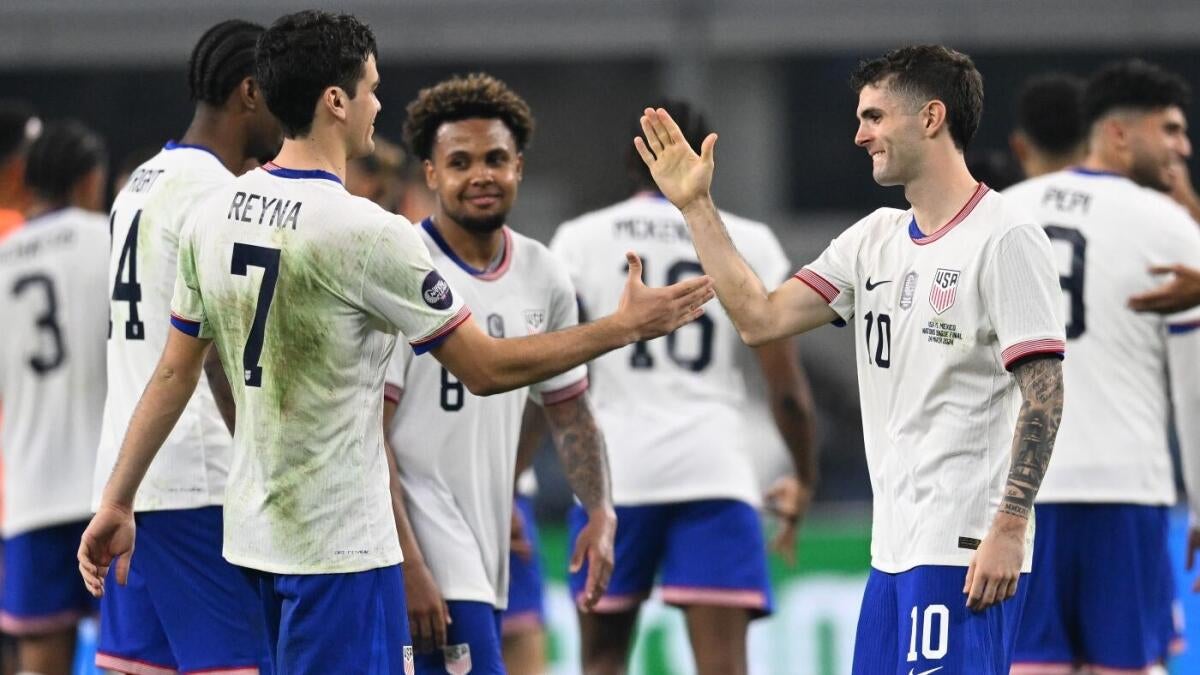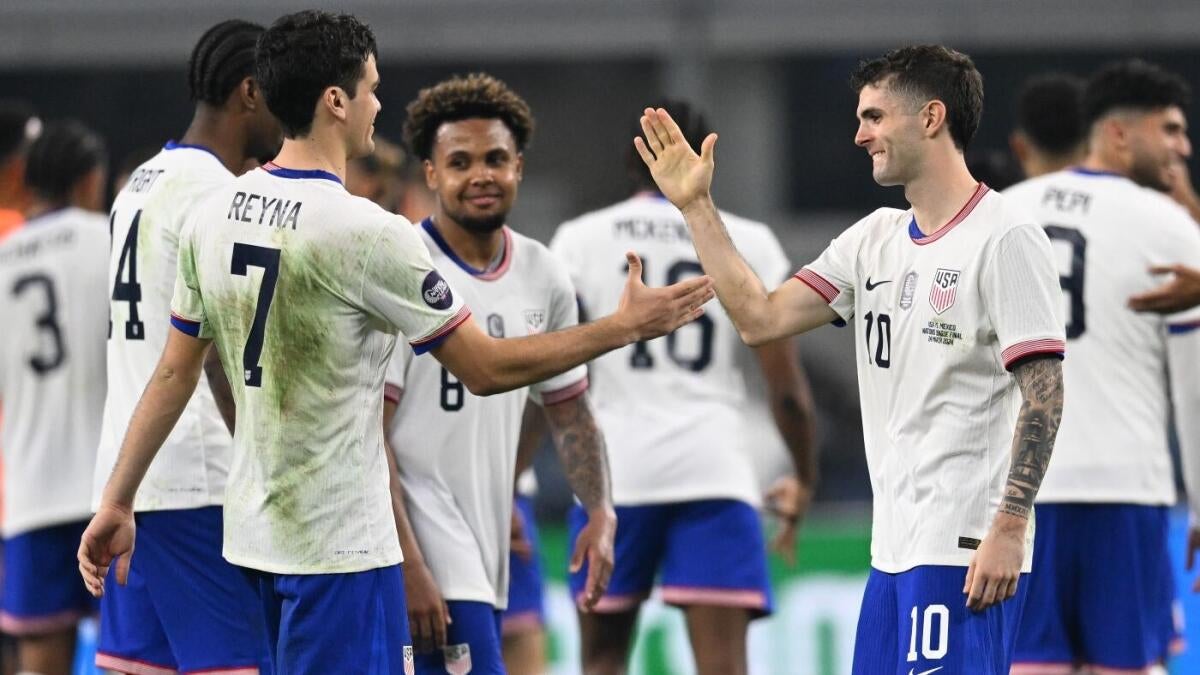The USMNT’s Path to 2026: A Strategic Blueprint for World Cup Success
Introduction: The Weight of Expectations
The 2026 FIFA World Cup, co-hosted by the United States, Mexico, and Canada, represents a monumental opportunity for the US Men’s National Team (USMNT). As the host nation, the Stars and Stripes are under immense pressure to deliver not just participation, but a memorable and impactful campaign. The journey to the tournament is fraught with challenges, from player availability to tactical decisions, but the potential rewards are immense. This report delves into the key aspects of the USMNT’s preparation, from roster projections to strategic considerations, as they navigate the road to 2026.
The Core Players: The Bedrock of the Team
At the heart of any successful national team lies a core group of players who are indispensable. For the USMNT, several names stand out as near-certainties for the 2026 World Cup roster. Christian Pulisic, despite his recent absences, remains a pivotal figure. His experience and talent are undeniable, and he is expected to play a crucial role in the team’s attack. Pulisic’s leadership and ability to create chances make him a vital asset, and his presence will be instrumental in the team’s success.
Weston McKennie is another player likely to be on the roster. His energy and versatility in midfield are invaluable assets. McKennie’s ability to contribute both defensively and offensively makes him a key player in Pochettino’s system. Sergino Dest, when healthy and in form, provides a dynamic presence at the back. His attacking prowess from the full-back position adds a crucial dimension to the team’s play. Matt Turner seems to be the preferred option in goal. His shot-stopping ability and command of his area make him a reliable option, and his experience will be crucial in high-pressure situations.
These players form the foundation upon which the team’s aspirations are built. Their performances will be critical in determining the team’s success, and their leadership will be essential in guiding the younger players through the challenges ahead.
The Bubble Players: The Battle for Spots
Beyond the core, there is a pool of players whose places on the roster are less secure. These “bubble players” face intense competition for limited spots, and their performances over the next year will be critical in determining their fate. One of the most talked-about players in this category is Gio Reyna. Reyna’s talent is undeniable, but his playing time at the club level and his availability for national team duties have been inconsistent. He needs to prove his fitness and demonstrate his value to the team.
Yunus Musah is another midfielder whose role needs to be defined. While he has shown flashes of brilliance, he needs to find more consistency. Tim Weah’s situation is similar. His versatility as a winger and wing-back is valuable, but he needs to solidify his position in the team. Malik Tillman, who has shown flashes of brilliance, is also in the mix and may well be on his way to solidifying a spot.
Several other players are also in the mix, including young talents looking to break through and experienced veterans hoping to make one last World Cup appearance. The competition for these spots will be fierce, and coach Mauricio Pochettino will have some tough decisions to make. The next year will be crucial for these players to prove their worth and secure their place on the roster.
Navigating Player Absences and Injuries
One of the biggest challenges facing the USMNT is the frequent absence of key players due to injuries, rest, and club commitments. This has made it difficult for Pochettino to field his preferred starting lineup consistently and to develop a cohesive team dynamic. Pulisic, for example, has often been rested to manage his workload and prevent injuries. McKennie, Weah, and Reyna have also missed games due to club commitments or fitness issues. Long-term injuries to players like Miles Robinson have further complicated matters.
These absences not only affect the team’s performance on the field but also disrupt the development of team chemistry and tactical understanding. Pochettino needs to find ways to mitigate the impact of these absences and to build a team that can perform well even when key players are unavailable. This may involve developing a deeper squad, rotating players more effectively, and ensuring that the team’s tactics are flexible enough to adapt to different lineups.
Pochettino’s Tactical Blueprint: Shaping the Team’s Identity
Mauricio Pochettino’s tactical approach will be crucial in shaping the USMNT’s identity and determining its success at the 2026 World Cup. He needs to develop a clear and effective game plan that maximizes the team’s strengths and minimizes its weaknesses. One of the key questions is how Pochettino will balance the team’s attacking and defensive responsibilities. The USMNT has a wealth of attacking talent, but it also needs to be solid defensively. Finding the right balance will be essential.
Another important aspect of Pochettino’s tactical approach will be his use of substitutions. He needs to identify players who can come off the bench and make an impact, and he needs to use his substitutions strategically to change the game’s momentum. Pochettino’s experience in managing top clubs will be invaluable in this regard, and his ability to adapt his tactics to different opponents will be crucial.
The Goalkeeping Conundrum: Choosing the Right Shot-Stopper
The goalkeeping position is always a critical one, and the USMNT is no exception. Matt Turner has emerged as the frontrunner. His shot-stopping ability and command of his area make him a reliable option. However, there are other goalkeepers in the mix, including Zack Steffen. Pochettino will need to make a decision about who will be the team’s number-one goalkeeper, and he needs to ensure that the chosen goalkeeper is in top form heading into the World Cup.
The goalkeeping position is often overlooked, but it can be the difference between success and failure. A strong goalkeeper can inspire the team and make crucial saves in high-pressure situations. Pochettino needs to ensure that he has the best possible goalkeeper for the job and that he is fully prepared for the challenges ahead.
The Home Advantage: A Double-Edged Sword
As one of the host nations, the USMNT will have the advantage of playing in front of its home fans. This will provide a significant boost to the team’s morale and confidence. However, it will also bring added pressure to perform. The USMNT will be expected to not only qualify for the knockout stages but also to make a deep run in the tournament. Anything less will be seen as a disappointment. Dealing with this pressure will be a key challenge for Pochettino and his players.
The home advantage can be a powerful motivator, but it can also be a burden. The team needs to embrace the support of the home crowd while remaining focused on their goals. Pochettino needs to create an environment where the players can thrive under pressure and perform at their best when it matters most.
The Path Ahead: Friendlies, Qualifying, and Preparation
The USMNT’s preparation for the 2026 World Cup will include a series of friendlies and qualifying matches. These games will provide valuable opportunities for Pochettino to experiment with different lineups and tactics and to assess the form of his players. The team will also need to focus on building its fitness and conditioning. The World Cup is a physically demanding tournament, and the USMNT needs to be in peak condition to compete with the best teams in the world.
The next year will be critical in shaping the team’s destiny. Pochettino needs to use this time wisely, ensuring that the team is fully prepared for the challenges ahead. This includes not only the physical aspects of the game but also the mental and tactical aspects. The team needs to be ready for anything, and Pochettino needs to ensure that they are.
Building a Winning Culture: The Foundation of Success
Creating a winning culture within the USMNT is just as important as the tactical and technical aspects of the game. This involves fostering a sense of unity, camaraderie, and shared purpose among the players. Pochettino needs to instill a belief in the team’s ability to compete with the best and to create an environment where players are motivated to give their all for the team. This requires strong leadership, effective communication, and a clear vision for the future.
A winning culture is built on trust, respect, and a shared commitment to excellence. Pochettino needs to ensure that the players are fully invested in the team’s goals and that they are willing to make the necessary sacrifices to achieve them. This includes not only the players but also the coaching staff, the medical team, and the support staff. Everyone needs to be working towards the same goal, and Pochettino needs to ensure that they are.
Conclusion: The Dream of World Cup Glory
The USMNT’s journey to the 2026 World Cup is a complex and challenging one. The road ahead is filled with uncertainty, but the team has the potential to achieve great things. With a talented squad, a capable coach, and the support of a nation, the USMNT has the opportunity to make a lasting impact on the world stage. The next year will be critical in shaping the team’s destiny, and all eyes will be on Pochettino and his players as they prepare to take on the world. The dream of World Cup glory is alive, and the USMNT is ready to chase it with everything they have. The time to shine is now, and the Stars and Stripes are poised to make their mark on the global stage.












